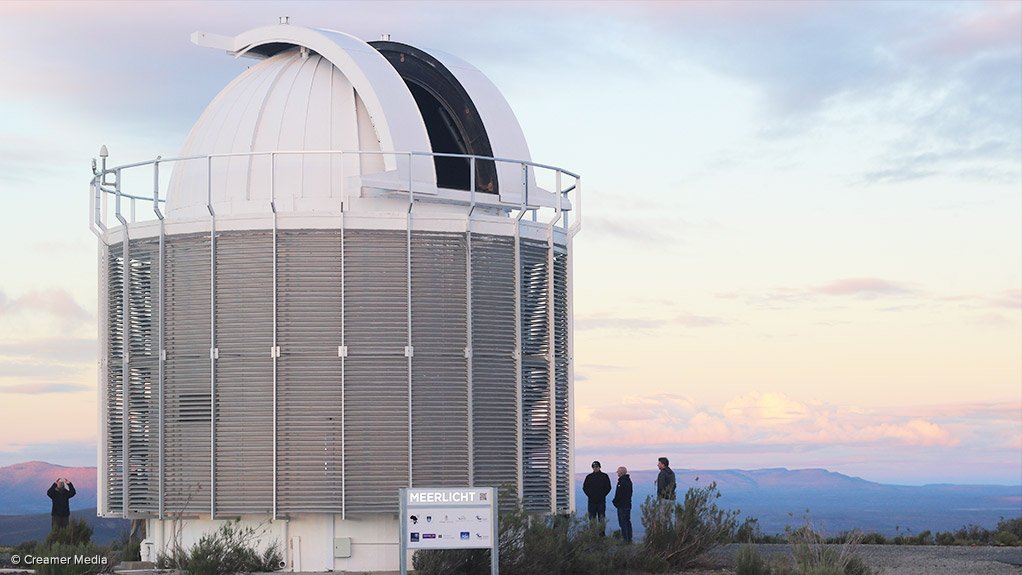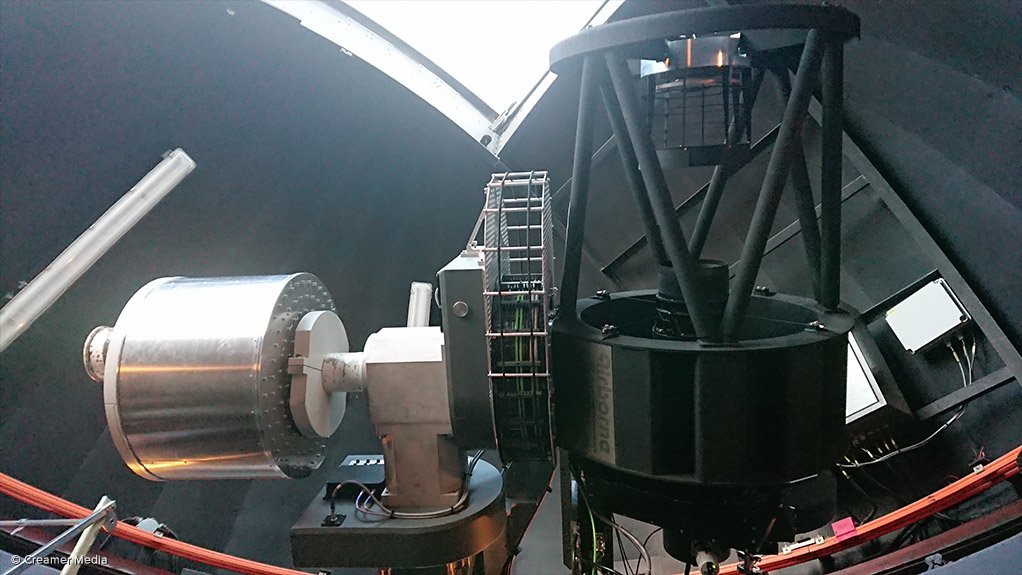The South African Astronomical Observatory (SAAO) and the Department of Science and Technology (DST) on Friday inaugurated the MeerLICHT optical telescope, in Sutherland, in the Northern Cape, to function as "the eye" of the MeerKAT radio array – the country’s precursor to the Square Kilometre Array.
The MeerLICHT will provide a simultaneous, real-time optical view of the radio (transient) sky as observed by MeerKAT. As such, it provides a uniquely broad contemporaneous view of the southern skies through multiple windows of the electromagnetic spectrum.
MeerLICHT is a fully robotic 0.65 m telescope with an instantaneous field of view matching that of MeerKAT (1.7˚ by 1.7˚) – about the equivalent of 13 full moons stacked together in a dense grid.
This wide field of view is achieved by a specific telescope design and by using the largest charge-coupled device currently available, a 110 megapixel camera that is mounted in a cryostat, which was built by the Institute of Astronomy at the University of Leuven, in Belgium. This camera uses the largest single detector used in optical astronomy anywhere in the world.
The project started in 2012, with the telescope's design in the Netherlands.
In standard science operations, MeerLICHT will take an optical image of the MeerKAT radio sky every minute, cycling through different optical filters. This data will be transferred immediately to the cloud-based computing facilities at the Inter-University Institute for Data Intensive Astronomy, where a pipeline will process the information continuously as the new observations stream in.
The MeerLICHT data stream will be converted into an ever-growing database, which will contain the variability information of millions of stars, and automatically report the detection of new transients.
This database can then be used by astronomers from the MeerLICHT consortium for data mining to correlate optical and radio properties of newly detected astrophysical transients; and to find unusual behaviour in faint variable stars, or possibly find new classes of variable stars.
The MeerLICHT project is a Dutch–South African–UK collaboration that involves researchers from six different institutes from the respective partner countries.
MeerLICHT forms part of a series of projects that are aligned to the objective of the multi-wavelength astronomy (WMA) strategy, which was adopted by the DST in 2015 and is aimed at enabling South Africa to maximise the return on investment made in astronomy.
The aim of the MWA strategy is to forge closer ties between radio, optical and gamma ray astronomy communities and facilities to achieve common scientific objectives and to develop human capital.
Speaking at the inauguration of the telescope, DST director-general Dr Phil Mjwara said South Africa had chosen astronomy as the field of science to show its abilities in research on a global scale, to bolster technological development in the fields of telecommunications, big data and large-scale computing, and as the field best able to bring science to the people.
Among the main scientific goals of MeerLICHT is the study of stellar explosions, which need to be investigated intensely before they fade away again. “The study of exploding stars across the universe will gain a whole new dimension,” said University of Cape Town professor and MeerLICHT co-principal investigator Patrick Woudt.
The link with the MeerKAT radio array has astronomers across the world excited about the new combination. “For us it was the reason to join this consortium. Flashes of radio emission known as fast radio bursts may now be ‘caught in the act’ by both MeerKAT and MeerLICHT,” explained University of Manchester professor Ben Stappers, who is also a MeerLICHT collaborator, and leader of the MeerTRAP project.
MeerTRAP is a European Research Council-funded project that uses the extremely sensitive MeerKAT telescope to search for pulsars and fast transients.
Stappers added that, hopefully, they can finally determine the origin of these enigmatic flashes.
“Besides extreme astrophysics typically associated with black holes and neutron stars, we will also study normal stars, in particular those that produce strong flares,” added University of Amsterdam professor Rudy Wijnands.
The simultaneous optical-radio monitoring of these stars will allow the scientists to investigate the impact of such flares on the habitability of the planets around them.
“It is fantastic to finally see what amazing views it produces,” concluded Radboud University professor Paul Groot.
EMAIL THIS ARTICLE SAVE THIS ARTICLE ARTICLE ENQUIRY
To subscribe email subscriptions@creamermedia.co.za or click here
To advertise email advertising@creamermedia.co.za or click here













